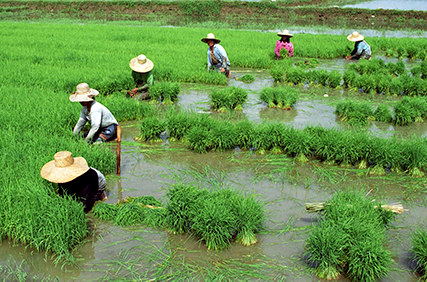South East Asia Conference on Current Approaches to the Environmental Risk Assessment of Genetically Engineered Crops
-

June 27, 2011-June 29, 2011
Hanoi, Vietnam
The Agriculture & Food Systems Institute’s Center for Environmental Risk Assessment organized the regional conference Current Approaches to the environmental risk assessment (ERA) of genetically engineered (GE) crops held in Hanoi, Vietnam, with cooperation from the Ministry of Natural Resources and Environment, Government of Vietnam. The conference provided an opportunity for participants to engage with international experts from regulatory agencies, public sector research institutions and the private sector on the current science that is used to inform the environmental risk assessment of GE crops.
Agenda
Program Overview
The conference featured sessions on:
- Problem Formulation for Environmental Risk Assessment of GE Plants
- International Approaches to ERA of GE Crops
- Pre‐Assessment Information Used in ERA
- Selected Topics in ERA
- Additional Science for Oversight of GE Plants
- Recurring Issues for ERA of GM Plants
Session I: Problem Formulation for Environmental Risk Assessment of GE Plants
Problem Formulation: What is It and Why is it Important?
Alan Gray, UK Center for Ecology and Hydrology, Emeritus
Generating Risk Hypotheses: The Importance of Distinguishing between Ecological Research and Ecological Risk Assessment
Andrew Roberts, Center for Environmental Risk Assessment, Agriculture & Food Systems Institute, USA
What Comes after Problem Formulation –Completing the ERA
Monica Garcia‐Alonso, Estel Consult Ltd., UK
Data Quality, Acceptability and Transportability
Paul Keese, Office of the Gene Technology Regulator, Australia
Session II: International Approaches to ERA of GE Crops
Status of ERA of GE Crops in South East Asia
Flerida Carino, University of the Philippines
International Consensus on ERA of GM Crops: Contributions from the OECD
Ken‐ichi Hayashi, OECD Working Group, Vice‐Chair Emeritus, Japan (presented by Andrew Roberts)
Comparative Analysis of Information and Data Requirements for ERA
Robert Potter, Robert Potter Consulting, Canada
Session III: Pre‐Assessment Information Used in ERA
What Does Molecular Characterization Contribute to the ERA?
John Cordts, US Department of Agriculture
Protein Expression Data as Part of the ERA
Flerida Carino, University of the Philippines
Session IV: Selected Topics in ERA
Collecting Data and Interpreting Results from Field Trials
Jeff Stein, Donald Danforth Plant Science Center, USA
Gene Flow to Wild and Weedy Relatives
Hector Quemada, Donald Danforth Plant Science Center, USA
Considering Gene Flow in Centers of Origin or Centers of Diversity
Dolores Ramirez, University of the Philippines, Los Baños
Early Tier Lab Testing for Impacts on Non‐Target Organisms
Annabel Waggoner, US Environmental Protection Agency
Semi‐field and Field Studies for Assessing Impacts on Non‐Target Organisms
Monica Garcia‐Alonso, Estel Consult Ltd., UK
Session V: Additional Science for Oversight of GE Plants
Post Release Environmental Monitoring (PREM)
Alan Gray, UK Center for Ecology and Hydrology, Emeritus
PREM in Europe: What is Driving the Build‐up of Requirements?
Patrick Rüdelsheim, Perseus, Belgium
Australia’s Approach to PREM
Paul Keese, Office of the Gene Technology Regulator, Australia
Insect Resistance Management: The Past, the Present and the Future
Jeff Stein, Donald Danforth Plant Science Center, USA
Appropriate Use of Models and Modeling in Development of IRM Plans
Michael Caprio, Mississippi State University, USA
Session VI: Recurring Issues for ERA of GM Plants (Panel Sessions)
Horizontal Gene Transfer
Paul Keese, Office of the Gene Technology Regulator, Australia
Antibiotic Resistance Markers
Jeff Stein, Donald Danforth Plant Science Center, USA
Herbicide Tolerance Management of GE Crops
Andrew Roberts, Center for Environmental Risk Assessment, Agriculture & Food Systems Institute, USA
